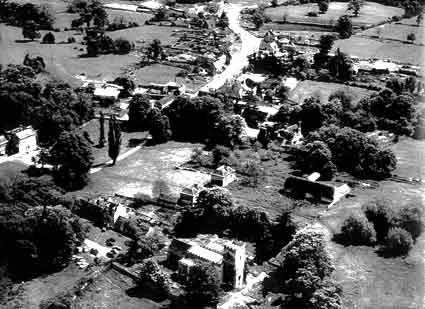
Great Linford Village History

click on image to show map
1086
The earliest reference to Linford is in the Domesday Book; it referred to two settlements lying either side of the River Ouse.
The name Linford probably derives from the name of the crossing point (or ford) over the river where there were lime (or linden) trees
1200's
By the 13th Century these two settlements were in different parishes and were known as Little Linford to the north of the river and Great Linford to the south.
1800's
During the 19th Century, Great Linford parish was not immune to the effects of the Industrial Revolution.
1800
The Grand Junction (now the Grand Union) Canal, opened in 1800, passed through the parish from its easternmost point, skirting the village to the north and cutting through the manor grounds.
A wharf serving the village was opened where the canal crossed the road leading north from the village
1817
A branch of the canal was opened from the wharf to Newport Pagnell, falling by seven locks over 1.4 km to a wharf on the west side of the town.
1864
This branch of the canal was closed and the route sold to the Newport Pagnell Railway Company.
1865
A branch railway from Newport Pagnell to Wolverton was opened, using for its route part of the Newport Pagnell Canal. A station close to the canal wharf served the village.
1964
The branch line closed. (Much of its route it now a pedestrian/cycle way, the 'Railway Walk'.)
1972
Great Linford was one of the first existing villages within Milton Keynes to be absorbed within new development.
The pre-city village contained a series of dwellings lining a single street, now the High Street, with the manor, rectory and parish church at its northern end.
At the south end of the High Street a triangular green was all that survived of the much larger medieval and post medieval green.
Prior to the development of Milton Keynes most of the parish was pasture, Great Linford had remained very much an agricultural village, with the majority of its inhabitants working on the land.
The Domesday Book
Compiled in 1086-87 after William the Conqueror had ordered a detailed inquiry 'to find out what and how much each landholder held in land and livestock, and what it was worth'.
The Grand Junction Canal
Was a man-made waterway built between 1793 and 1805 linking London and Birmingham.
The Branch Line
The history of the Newport Pagnell to Wolverton Railway line is examined on Giffard Park Combined School's website
